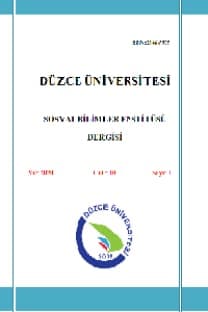Sri Lanka'da Sivil Savaş ve Negatif Barış Süreci: Positif Barış Neden İmkansız?
Sri Lanka, uzun tarihinde acının çoğunu sakladı, İngiltere tarafından ele geçirildi ve sömürge sonrası bu kadar iç savaş yaşandı. Sonunda, iç savaş 2009'da sona erdi, Tamil’in Tamil Eelam Kurtuluş Kaplanları (LTTE) adlı ayrılıkçı grubu, merkezi hükümet güçleri tarafından yenildi. Bazı insan hakları örgütleri ve STK'ları, Sri Lanka'daki sivil çatışmadan sonra barış sürecini takip etti ve ne iç savaş ne de Sri Lanka'daki ihlallerin bitmediğine inanıyorlar, ayrıca iki etnik taraf arasındaki boşlukların genişlediğine inanıyorlar. Aksine, Sri Lanka Hükümeti (GoSL) tüm iddia ve iddiaları reddetti, barış ilan etti ve savaşın sona ermesini istedi. Ama yine de, oradaki bir soru: Kimler için ne tür bir barış ya da barış? Çalışmanın amacı, savaşın sonunda Sri Lanka'da iç savaşın nasıl gerçekleştiğini ve Galtung’un barış teorisi tarafından alınan olumsuz barışın neden barışa dönüşmediğini açıklamaktır. Savaşın ve teorik analizin tarihsel arka planı, Sri Lanka'da bir sorunun ne olduğunu ve buradaki olumsuz barışın sürdürülebilirlik ve kimlik politikalarıyla sürdürülebilirliğini değerlendirmek için kullanıyor. Bu araştırma, dört ana barışın olumlu barışı sağladığı sonucuna varmıştır.
CIVIL WAR IN SRI LANKA AND NEGATİVE PEACE PROCESS: WHY IS POSITIVE PEACE IMPOSSIBLE?
Sri Lanka has bearded much of the pain in his long history, he captured by Britain and after the colonial time so many time civil war occurred in there. Finally, the civil war was ended in 2009, the Tamil’s separatist group, which called Liberation Tigers of Tamil Eelam (LTTE), was defeated by the central government powers. Some human rights organizations and NGOs followed to a process of the peace after the civil conflict in Sri Lanka and they believe that neither civil war nor violation in Sri Lanka did not finish, moreover gaps between two ethnic sides is widening. On the contrary Government of Sri Lanka (GoSL) rejected all claims and arguments, and declared to peace and ended of the war. But still, a question in there: What kind of peace or peace for whom? The purpose of the study is to explain how the civil war has occurred in Sri Lanka and why negative peace did not transform to positive peace, which is taking by Galtung’s peace theory, after the end of the war. The historical background of the war and theoretical analysis is using to evaluate what was a problem in Sri Lanka, and sustainability of the negative peace in there without any accountability and with identity politics. This research concluded that four main congestions to positive peace.
___
DeVotta, N. (2010). Routledge Handbook of South Asian Politics: India, Pakistan, Bangladesh, Sri Lanka, and Nepal. Eds: P.R. Brass. Routledge PublishingFischer, D. (2007). Peace as a Self-Regulating Process. Eds. Johan Galtung and C. Webel. Handbook of Peace and Conflict Studies. Routledge Publishing. CanadaGaltung, Johan (1969). Peace, Violence and Peace Research. Sage Publications. California
Galtung, Johan (1990). Cultural Violence. Journal of Peace Research. Vol: 27 Issue: 3
Galtung, Johan (2011). Peace, Positive and Negative. Blackwell Publishing. Retrieved From https://onlinelibrary.wiley.com/doi/pdf/10.1002/9780470672532.wbepp189
Harris G. (2005). Sri Lanka’s Tamil Majority Grows Impatient with Just Promises. The New York Times. Retrieved From: http://nytimes.com/2015/03/16/world/asia/sri-lankas-tamil-minority-grows-impatient-with-just-promises.html
Hathaway, William T. (2013). Varieties of Violence. Received from https://www.countercurrents.org/hathaway151013.htm
Höglund K.& Orjuela C. (2012). Hyprid Peace and Illiberal Peacebuilding in Sri Lanka. Global Governance. Vol: 18. Issue: 1
International Security Groups (2012). Reconcialition in Sri Lanka: Harder Than Ever. Retrieved From: http://www.crisisgroup.org/rn/regions/asia/south-asia/sri-lanka/209-reconciliation-in-sri-lanka-harder-than-ever.aspx
Lindberg J. & Wezeman S. (2011). Arms Trade with Sri Lanka: Global Business, Local Costs. Pax Förlag.Stockholm
Maley, W. (1985). Peace, Needs and Utopia. Political Studies. Vol: 33 Issiu: 4 Retrieved From https://doi.org/10.1111/j.1467-9248.1985.tb01582.x
Orjuela C. (2009). Domesticating Tigers: The LTTE and Peacemaking in Sri Lanka in Conflict Transformation and Peacebuilding: Moving From Violence to Sustainable Peace. Ed. Bruce W. Dayton. Routhedge Taylor and Francis Group. New York
Peebles, Patrick (2006). The History of Sri Lanka. Greenwood Publishing Group
Rowson, Martin (2012). MPW Course 4: Structural Violence and the Underlying Causes of Violent Conflict. Medical Peace Work Textbook. 2nd Edition. London
Sıvanandan, A.(2010). Ethnic Cleansing in Sri Lanka. Race and Class. Vol: 51. Issue: 3. Sage Journal. Retrieved From https://doi.org/10.1177/0306396809354165
The UN Development Programme Report (2014). Young Development: Towards a More Inclusive Future. Colomba. Retrieved From http://hdr.undp.org/sites/default/files/sri-lanka_nhdr_on_youth.pdf
Wheeler T. (2012). China and Conflict Affected States: Case Study: Sri Lanka. Saferworld Publication. Retrieved From https://assets.publishing.service.gov.uk/media/57a08aad40f0b649740006f2/China-and-conflict-affected-states.pdf
- ISSN: 2146-5975
- Yayın Aralığı: Yılda 2 Sayı
- Yayıncı: Düzce Üniversitesi
Sayıdaki Diğer Makaleler
Sri Lanka'da Sivil Savaş ve Negatif Barış Süreci: Positif Barış Neden İmkansız?
TERMAL TURİZM İŞLETMELERİNDEN HİZMET ALAN MÜŞTERİLERİN MEMNUNİYETİ ÜZERİNE BİR ARAŞTIRMA
Said KINGIR, Süleyman AĞRAŞ, Yılmaz MARTİN, Hasan Önal ŞEYHANLIOĞLU
DÜZCE ÜNİVERSİTESİ ÖĞRENCİLERİNİN ETNOSENTRİK EĞİLİMLERİNİN MARKA KİŞİLİK ALGILAMALARINA ETKİSİ
GÜMÜŞHANE’DE GENEL MİLLETVEKİLİ SEÇİMLERİ (1946-1950)
Mehmet Emin KENANOĞLU, Murat AYDIN
OKUL MÜDÜRLERİNİN DÖNÜŞÜMCÜ (TRANSFORMATIONAL) LİDERLİK ROLLERİ
Süleyman GÖKSOY, Elif TORLAK, Beyza UĞUZ
İLKOKUL ÖĞRENCİLERİNİN OKUL VE OKUL MÜDÜRÜ KAVRAMLARINA İLİŞKİN METAFORİK ALGILARI
